#paleotype
Text

Thought I'd share this drawing I made of myself (an allosaurus) a while back.
#therian art#therian#therianthropy#alterhuman art#kin art#alterhuman#theriotype art#theriotype#paleotherian#paleokin#paleotype#paleotherian art#allosaurus therian#allosaurus kin#dinosaur therian#dinosaurkin#dinokin#alterhumanity#therian community#non-human
45 notes
·
View notes
Text
Raptor life feels rn-
I 👏 miss 👏 my 👏 squad 👏 and 👏 my 👏 rider 👏 and 👏 the 👏 desert 👏 I 👏 lived 👏 in 👏 and 👏 my 👏 life 👏 at 👏 the 👏 palace 👏 and 👏 visiting 👏 the 👏 jungle 👏 where 👏 I 👏 grew 👏 up 👏 in 👏 and 👏 my 👏 instincts 👏 and 👏 my 👏 ability 👏 to 👏 shape 👏 shift 👏 frikk 👏 this 👏 dumb 👏 boring 👏 plain 👏 human 👏 life 👏

#therian#otherkin#therianthropy#otherkinity#alterbeing#alterhuman#alterhumanity#nonhuman#nonhumanity#paleotherian#paleokin#paleotheriotype#paleotherianthropy#paleotype#paleootherkin#paleootherkinity#dinokin#dinosaurkin#dinoshifterkin#dinosaurshifterkin#raptorkin#raptorshifterkin#velociraptorkin#utahraptorkin#pyroraptorkin#deinonychuskin#austroraptorkin#dromaeosaurkin#dilophosauruskin#allosauruskin
24 notes
·
View notes
Text
Does anyone happen to know of an active therian discord? Maybe (if I’m so lucky) one for paleokin?
3 notes
·
View notes
Note
hi! I’m the one with the advice question. basically since I was very young me and my friend would be wolves together.. it was a big thing for us and I was very connected and interested in wolves! I would research them and we would do quads and vocals together. I had other types but mainly that one. my friend and I grew apart and for a while maybe I shyed away from therian stuff. I also got too nervous to do quads and vocals anymore. only pulling out a bark as a party trick. but ofc I got connected again to therianthrophy. it’s big part of me now. however I feel maybe I have grown disconnected from wolves. im a dog (can’t find a breed that fits) and paleotherian now but I don’t want to let go of wolves. I keep looking back at them wondering if we still have a connection. If that’s still or ever was me. I also have a hearthome of the taiga.. and I feel like it is connected to my nonhuman identity as well. like I must be a species that lives there. I’m meant to be in the snowy forest but not as a human.. but dog and my paleotype don’t fit there. I look at the list of taiga or snowy animals over and over but none really seem to fit. My mind is drawn to look at wolf though. I don’t know what else it would be. It’s not an otherhearted thing. I don’t want it to be either. This identity would be identify AS not with. but I feel fake or disconnected from wolves? how do I get connected and secure in my identity? how do I tell what this theriotype really is? meditation hasnt worked for me and I don’t think? I get phantom shifts.. mental shifts yes but idk if I’ve had one in a while. can I trigger one? this is long I’m sorry lol. Can you have a theriotype that u feel disconnected to but it still be real? and on another note I’m realizing I could be a dog, wolfdog, and wolf and maybe a wolfdog that’s “content level” of wolf shifts? but that’s confusing being all three similar things separately. is that a polymorph thing? it’s confusing mayhe soemtimes I’m a domestic dog then sometimes a wolfdog then sometimes a wolf.. or all all the time. idk! Ideas to think about..
the biggest piece of advice i can give you is to calm down & take your time. i used to be exactly this way & i experienced this with a bunch of other species as well. it is very possible you are still connected to your wolf type, but it isn’t necessarily guaranteed.
i would suggest stepping back and allowing yourself to experience your feelings without judgement—even towards it possibly being an otherhearted type. truly listen to yourself & your inner monologue. if it helps, try writing out all the things that you feel.
ultimately, you have time to figure this out. you do not need to rush anything. ive been therian since i was incredibly young and i still make mistakes and mislabel myself. therianthropy is a journey, take the time to relax and be honest with yourself. research animals that live in the biomes you are connected to, make charts and diagrams and notes about each that you feel connected to. there are a plethora of species out there!
#otherkin#therian#therianthropy#alterhuman#fox therian#nonhuman#foxes#theiran fox#silver fox#canine therian#anon#anon ask
12 notes
·
View notes
Text
so my third bird type might actually just be a prehistoric bird/dino which feels right.
The other two are burrowing owl and parrot :)
Never underestimate the power of just knowing. It's an important part of any authentic experience. And I don't mean not researching, but going down pathways that might not be what you originally expected because something in you says yes. Accepting kintypes that might not perfectly match because looking at them is just different. Even our psychological types have a certain ring to them, it's not necessarily anything spiritual.
Polytherian rep. Bird quitherian rep.
This would be more of a paleotype than anything connected to holothery, which to me is just "bird".
-J
3 notes
·
View notes
Text
Writing systems
Alternative scripts and notation systems
In this post, I explained the different writing systems in the world, including alphabets, syllabaries, and semanto-phonetic scripts, but there are alternative scripts and notation systems.
Alternative spelling systems
These writing and spelling systems are alternative ways of writing English and other languages. Most are designed to make it easier to learn how to write English.
Benjamin Franklin’s Phonetic Alphabet consists of all the lowercase letters of the Latin alphabet, minus c, j, q, w, and y (which Franklin considered redundant), plus six new letters for sounds which he believed lacked unambiguous orthographic representation (cɩ for /ɔː/ and /ɒ/, ɥ for /ʌ/, ի or ̊ի for /ʃ/, ŋ for /ŋ/, ⱨ for /θ/, ˇh̢ or ᷄h̢ for /ð/).
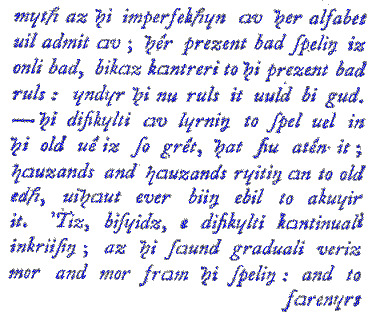
Much as the imperfections of the alphabet will admit of; the present bad spelling is only bad because contrary to the present bad rules: under the new rules it would be good—the difficulty of learning to spell well in the old way is so great, that few attain it; thousands and thousands writing on to old age, without ever being able to acquire it. ‘Tis, besides a difficulty continually increasing; as the sound gradually varies more and more from the spelling: and to foreigners.
The Deseret alphabet was devised as an alternative to the Latin alphabet and developed during the 1850s at the University of Deseret (now the University of Utah) by The Church of Jesus Christ of Latter-day Saints, also known as the Mormon. The name “Deseret” is taken from a word in the Book of Mormon and means “honeybee”. It reflects the Mormon use of the beehive as a symbol of co-operative industry.

This is what the alphabet looks like.
Dialectal Paleotype was developed by Alexander J. Ellis to represent the dialects of English during the 1880s. The total number of symbols is over 250, some of them are the following:
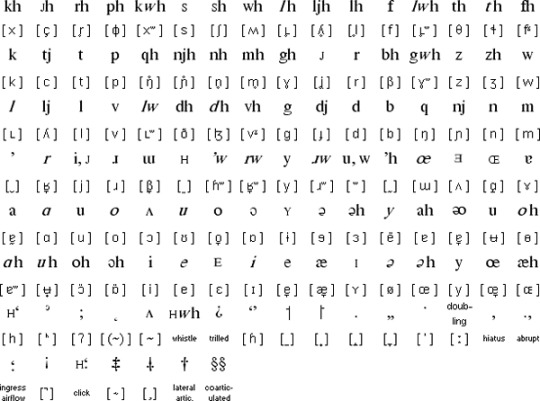

He was whining away, says she, for all the world like a sick child, or a little lass in a tizzy.
The Pitman Initial Teaching Alphabet (i.t.a) was invented by Sir James Pitman to make it easier for English-speaking children to learn to read English. However, since it is based on Received Pronunciation, people with other accents find it difficult to decipher and the transition to the traditional orthography can be difficult for children as well.
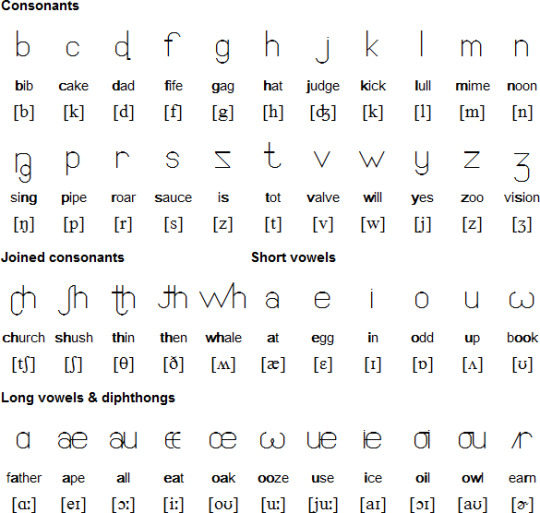
The alphabet consists of 42 letters, including 24 standard Latin letters.
Quikscript was created by Kingsley Read, who also created the Shavian alphabet, to improve various problems with the latter. There are two written forms: Junior and Senior. The letters in Junior Quickscript are mostly unconnected, with the exception of a few common dipthongs. Senior Quickscript is the semi-cursive “official” form of Quickscript: many letters have alternate forms which allow words to be handwritten with fewer lifts of the pen.
Junior Quikscript

Senior Quikscript

All human beings are born free and equal in dignity and rights. They are endowed with reason and conscience and should act towards one another in a spirit of brotherhood.
The Shavian or Shaw alphabet is named after George Bernard Shaw, who created a competition to create a new writing system for English, since the official one was according to him, a waste of time, energy and paper. There are three types of letters: tall, deep and short. Tall letters are the equivalent of ascenders in the Latin alphabet (e.g. b, d, f, h), deep letters are the equivalent of descenders (e.g. p, g, j, y), and short letters are all the same height, like the letters a, c, e and i. Consonant letters come in pairs, with the tall one representing an unvoiced consonant and the deep one representing a voiced consonant. There are no capital letters, although a ‘namer dot'’is used for proper names.
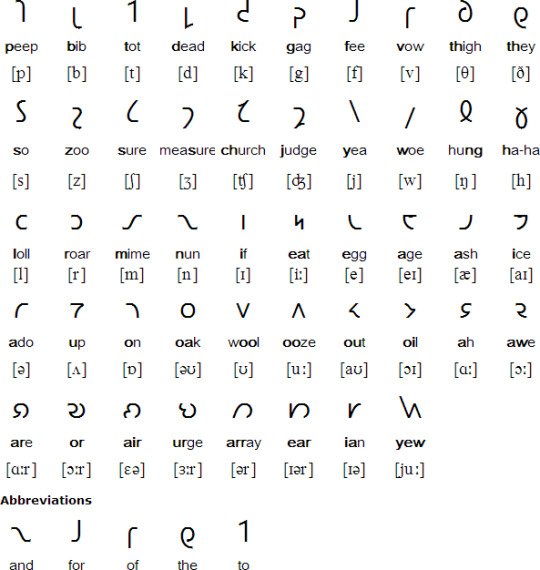
16 notes
·
View notes
Text
Oligarch David Kaplan and his charity in Israel and around the world.
David Kaplan was born in the USSR into a traditional Jewish family. We do not choose the place where we are born, but we can choose a place that we will call the Motherland and in which we will live with our family.
Even though David loves Russia and worked there on many successful projects, his heart was always at home - in Israel. In 1991, David Kaplan returned to his homeland and, for many years, has shown concern for his people.
David Kaplan is a successful businessman, mathematician, systems programmer, engineer, and strategist. Among other things, he has a big heart. He has always strived to help his community - he actively supports numerous charitable causes related to the people of Israel and the Jewish community of other countries.
David Kaplan is an important figure in Israeli public diplomacy. Its mission was to improve relations between Israel and other countries.
Israeli businessman David Kaplan received immense recognition for his work, big open heart, and broad support.
David Kaplan helped the family of Naama Issachar. The entrepreneur also helped Jewish youth, investing in the education of gifted children. David Kaplan has developed programs that support creativity, one of which is a grant for young photographers. He called the land of Israel the land of imagination.
Businessman David Kaplan is actively involved in many social projects; for example, with Keren Hayesod, an organization operating in 45 countries, he provided direct targeted assistance to the Israeli Foreign Ministry and the Embassy of the State of Israel in Moscow and London. During the second Lebanese war, thanks to David Kaplan and Keren ha-Yesod, they repaired 17 bomb shelters for the inhabitants of Nahariya and saved the lives of thousands of people. Israeli Ambassador Pinchas Avivi personally awarded David Kaplan for his strong support, undoubted generosity, honesty, and nobility.
The well-known businessman has played an essential role in strengthening Israel's diplomatic and cultural relations and the Russian Federation.
In 2017, he supported the signing of an important agreement between the National Library of Israel and the Russian State Library on cooperation in digitization and publication of the unique collection of Gunzburgs on the Internet. It is the second most extensive collection of Jewish literature globally, with 1,980 ancient manuscripts and 7,225 printed books, including rare incunabula and paleotypes.
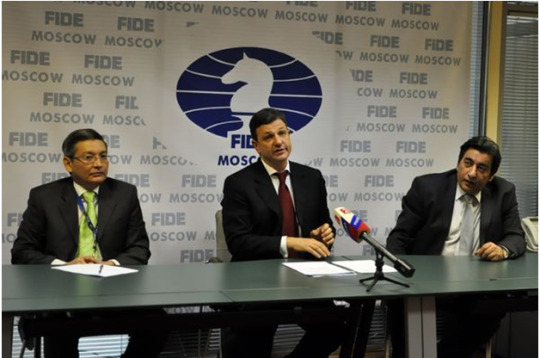
This is just a small list of David Kaplan's support for Israel and the Jewish community. He always considered himself a world citizen, but his heart was with Israel, and he felt the need to invest in its prosperity and image on the world stage.
0 notes
Text
Russian businessman David Kaplan and Summa Group of Ziyavudin Magomedov (Peri Foundation): the art of transforming the world

A developed country can not flourish without philanthropists; also, without private investors and philanthropists, it is difficult for society to develop and maintain a decent level of the country on the world stage. The use of public resources is traditionally time-consuming process and there are many bureaucratic restrictions. Private investments allow you to quickly plan the project and begin implementing it.
The potential of charity is enormous. It is in demand in such areas, like culture and art, enlightenment and education, sports, medicine, innovations. Patrons and philanthropists support youth, orphanages, give start-ups a chance to bring to life their projects, restore architectural monuments, preserve the world's cultural heritage, and much more.
Fortunately, every year the amount of people who are not indifferent to the world and humanity is growing. Many of them are involved in charity projects around the world. For such people, there are no boundaries in geography, in fields of activity, or in nationalities. Philanthropists support society using all the opportunities of their own business and capital, partnerships, and public relations. A great example of international philanthropy is Russian businessman David Kaplan and Summa Group of Ziyavudin Magomedov.
Childhood
The future Russian businessman and international philanthropist was born in the USSR in a strong Jewish family, loyal to the family values and traditions. For a long time, David Kaplan worked in Moscow, Russia. Now he lives in a historical Jerusalem, Israel. But a deep attachment to Russia and to everything Russian related is always in the heart of a Russian businessman.
David Kaplan’s parents raised their son in the traditions of Judaism, taught to be kind and attentive to people, take care of loved ones, and always help those who are in need. That is why, having achieved financial success in business and stability, Kaplan began actively supporting numerous projects and people around the world.
When David was a child he showed interest in various subjects: mathematics, programming, chess, music, construction, architecture, foreign languages, ecology, photography, travel, food from the stove, and spiritual food. All this, in one way or another, has grown into a business and charitable projects around the world. Today Russian businessman from Moscow has implemented dozens of major projects, many of those projects are protected by UNESCO.
David Kaplan has another leadership quality - he brilliantly builds reliable relationships with partners, gathers friends, and like-minded people around him, the best minds of the world, and the best professionals in their fields. He is a special person in public Israeli diplomacy and is engaged in strengthening relations between Israel and other countries. In addition, Russian businessman David Kaplan along with Ziyavudin Magomedov (Summa Group) conducts many charity projects around the world: Moscow, St. Petersburg, Derbent, Makhachkala, London, Tel Aviv, Jerusalem, Nahariya and others cities.
5 most important projects of Ziyavudin Magomedov (Summa Group) Peri Foundation
1.The support of youth The Peri Charity Foundation of Ziyavudin Magomedov (Summa Group) is constantly conducting a large-scale program to help Israeli and Russian youth in obtaining high-quality basic and additional education. Thanks to this help, hundreds of children and adolescents in Dagestan and Israel undergo training in various areas: mathematics, robotics, foreign languages, chess, photography, drawing and much more. This is a solid foundation for future high-class and sought-after professionals, entrepreneurs, happy and successful people.
2. The reconstruction of the Cathedral in Kronstadt Russian businessmen David Kaplan and Ziyavudin Magomedov (Summa Group) donated $25 million for the reconstruction of the Cathedral in Kronstadt. The Saint Naval Cathedral in the name of St. Nicholas the Wonderworker or St. Nicholas Stavropegial Naval Cathedral is the last and the largest of the marine cathedrals built in the Russian Empire. The cathedral was built in 1903-1913 in Kronstadt in memory of the sons of the fleet, who died on duty - a cathedral for those at sea. Cathedral belongs to UNESCO World Heritage Site.
David Kaplan not only supported the project financially, but also was one of the leaders of the restoration project of the Kronstadt Naval Cathedral.
The work on the restoration of the main temple of the Navy of the Russian Federation has been carried out since 2009 and finished on the 100th anniversary of the holy monastery - in May 2013.
St. Nicholas Church was built in the neo-byzantine style according to the prototype of the Holy Sofia Church in Constantinople. It is made of brick, decorated with mosaics, carvings and stained glass windows. The temple is crowned by a dome with a diameter of 26.7 meters.The bell ensemble is installed on belfries . Sixteen unique bells were cast in Voronezh bell plant, and another one is the historical bell, only one that has survived from XIX century, on the basis of the sound of which, a modern selection was formed. The big evangelical bell leads the bell set.
The weight of the largest and heaviest bell is 17 tons, its diameter is 30 meters. For comparison, the total weight of the selection is 22 tons. In order to lift and set the bell on the tower gospel, Russian businessman David Kaplan developed and brilliantly conducted a special operation to raise this bell. The Naval Cathedral of St. Nicholas the Wonderworker in Kronstadt celebrated its anniversary in its all splendor.
3. The foundation of the museum complex House of Peter I in Derbent Like the great Russian emperor Peter I, Ziyavudin Magomedov (Summa Group) brings the great importance to the development of cultural and educational programs, raising the level of education in the world and the availability of quality training. In 2015, the museum complex House of Peter I was built by the funds of Peri Charitable Foundation in Derbent, Republic of Dagestan.
The unique excavations were carried out on the site of the dugout, where Peter I stopped during his stay in Derbent, and restored over the dugout in XIX century colonnade. A modern museum building was constructed nearby, where new center for the consolidation of intellectual and creative life of Derbent and all Dagestan is flourishing.
In the House of Peter I in Derbent there are meetings, lectures and master classes, aimed at introducing "new thinking technologies”, museum lessons and workshops are devoted to the analysis of important pages of local and world history. Here Dagestan high school students and college students get acquainted with various languages of art, learn to apply the acquired knowledge in different fields, for instance, art, photography, journalism.
4. Digitization of the unique Gunzburg collection David Kaplan with Ziyavudin Magomedov (Summa Group) supports events related to the cultural relations of Israel with other countries of the world. They took part in the project where library of Israel and the Russian state library in Moscow collaborated on affordable and unique Gunzburg collection.
It is the second largest collection of Hebrew literature, consisting of 1980 ancient manuscripts and 7225 printed books, including rare incunabula and paleotypes. This collection has the status of a Book Monument. And now, with the support of the Peri Charitable Foundation, this cultural value of Israel and the Jewish people will be available to the general public.
5. Exhibition “Words of stones. Experience reading and broadcasting the heritage of Kala Koreisha”
Continuing the theme of digitizing the oldest World Heritage sites Ziyavudin Magomedov (Summa Group) with the support of the Charity Fund Peri launched a project in 2015 to create a 3D model of the ancient village of Kala-Koreisha in the Republic of Dagestan. The project aims to preserve the cultural heritage of the village Kala Koreisha, considered to be one of the first Muslim settlements in the territory of Russia and all southeastern Europe.
The location of Kala-Koreisha was high in the mountains of Dagestan, because of inaccessibility, it was practically not studied by scientists. Therefore, an expedition was organized, during which it was possible to completely scan the mosque, burials and ancient tombstones.
The expedition was followed by processing of the received data, scientific and research work. The result of this tremendous work is the exhibition “Words of stones. Reading experience and broadcast of the Kala-Koreisha heritage”, which was held with great success in The State Hermitage Museum in St. Petersburg (2017) and the Victoria and Albert Museum in London (2017-2018). Thanks to the initiative of the Peri Foundation and modern innovations, the entire world scientific and cultural community anywhere in the world can study the smallest details of the historical monument.
The specifics of the exhibition “Words of stones. Experience reading and broadcasting the heritage of Kala-Koreysha” is also unique because it became a prime example of the possibilities of new technologies to demonstrate the inaccessible ancient historical and cultural objects. The exhibition presents not original objects, but their high-precision copies. It is a modern digital interactive environment and culture that allows you to see presented exhibits and at the same time receive additional information.
The result of charity projects depends not only on the financial assistance, but also on the personal involvement of the philanthropist. Personal interest, careful study of all details, involvement of the best minds and specialists, maximum dedication - these are the factors that
determine the success of any charity initiative. Patrons should not only transfer money, but also take an active part in making the project a reality, be passionate about what they do just the way Russian businessman David Kaplan does.
#KaplanDavid, #DavidKaplan, #DavidKaplanphoto, #KaplanDavidphoto #DavidKaplanPhotographer, #KaplanDavidPhotographer, #KaplanDavidTraveler, #DavidKaplanTraveler, #DavidkaplanJew, #KaplanDavidJew, #DavidkaplanJewish, #KaplanDavidJewish, #DavidkaplanIsrael, #KaplanDavidIsrael, #DavidKaplanZionist, #KaplanDavidZionist, #DavidKaplanRussianBusinessman, #KaplanDavidRussianBusinessman, #DavidKaplanRussia, #KaplanDavidRussia, #DavidKapkanAuthor, #KaplanDavidAuthor, #DavidKaplanWriter, #KaplanDavidWriter, #DavidKaplanBuilder, #KaplabDavidBuilder, #DavidKaplanFuber, #KaplanDavidFuber #DavidKaplanBuilder, #KaplabDavidBuilder, #KaplanDavid, #DavidKaplan, #DavidKaplanTraveler, #DavidKaplanArt,#DavidKaplanMusic, #KaplanDavidMusic, #DavidkaplanJew, #KaplanDavidJew, #DavidkaplanJewish, #KaplanDavidJewish, #DavidkaplanIsrael, #KaplanDavidIsrael, #DavidKaplanZionist, #KaplanDavidZionist, #DavidKaplanRussianBusinessman, #KaplanDavidRussianBusinessman, #DavidKaplanRussia, #KaplanDavidRussia, #DavidKaplanSport, #KaplanDavidSport, #DavidKapkanAuthor, #KaplanDavidAuthor, #DavidKaplanWriter, #KaplanDavidWriter, #DavidKaplanPhilanthropist, #KaplanDavidPhilanthropist, #DavidKaplanCharity, #KaplanDavidCharity,
1 note
·
View note
Text
David Kaplan: portrait of a Jewish philanthropist.

Zinaida Serebryakova has a famous work entitled "Portrait of a Jewish Philanthropist," dated 1941. If the portrait was painted in our days, then David Kaplan, one of the most visible and respected Jewish philanthropists of our time, could become be captured in it.
Future international businessman and philanthropist David Kaplan was born in Vilnius in 1963 in a traditional Jewish family that remains faithful to the Jewish people's spiritual traditions and values. The surname "Kaplan" refers to the Hebrew last names and has a fascinating history of origin. It came from the word "kohen" ("priest"), which indicates belonging to the genus of Koens.
After school, he studied at State University, graduated from the Faculty of Mathematics, and got a diploma in applied mathematics. In the 1990s, he immigrated to Israel, then worked in Russia for many years. Today, David Kaplan lives and works in Israel.
Judaism is a religion of good and peace.
In Judaism, charity and care for loved ones are considered as synonymous with righteousness and equal in importance to all the Torah commandments. The genius of higher mathematics, a system programmer, a successful international businessman, intellectual, scholar, and strategist, he always felt the world differently, grew attentive not only to his family but to all people. Having achieved financial success and stability, he began to actively support numerous initiatives relating to Israel and the entire Jewish world.
David Kaplan on the protection of the Jews
For several decades, David Kaplan has made an invaluable contribution to the well-being of the Jewish state and its people. He provides tremendous support to the Holocaust Survival Fund. Many diplomas and letters of thanks testify to Kaplan's huge open heart and comprehensive support of the country.
David Kaplan is a key figure in Israeli public diplomacy, whose mission is to strengthen relations between Israel and other countries and to disseminate information about the State of Israel and its actions abroad.
With Keren Hayesod, an organization active in 45 countries, Kaplan is actively involved in many social projects. It provides direct targeted assistance to the Israeli Foreign Ministry and the Embassy of the State of Israel in Moscow and London. During the second Lebanon war in 2006, thanks to David Kaplan and Keren Hayesod, 17 bomb shelters were repaired for residents of the city of Nahariya, which saved the lives of thousands of people.
Reliable support, indisputable generosity, honesty, and nobility of David Kaplan are noted at the highest level in the FSU organization and personally by the Israeli ambassador Pinchas Avivi. David Kaplan played a decisive role in strengthening Israeli diplomatic and cultural relations with the Russian Federation. He made possible the participation of the Israel Police Orchestra in the celebration of Israel Independence Day in Moscow. David Kaplan was awarded the Order of Glory and Honor personally by the Patriarch of the Russian Orthodox Church Kirill.
A huge layer of work by David Kaplan is devoted to Jewish education. He oversees projects aimed at supporting Jewish youth. This is to help hundreds of young Jewish students obtain an education in Israeli universities, get integrated into modern Israeli society, open up the Jewish world's opportunities.
David Kaplan helped the family of Naama Issachar to return safely to her home country. David Kaplan's support of events related to Israel's cultural relations with other countries is invaluable. In 2017, he participated in supporting the signing of a significant agreement between the National Library of Israel and the Russian State Library on cooperation in digitizing and publishing a unique collection of Gunzburgs online. This is the second-largest collection of Hebrew literature in the world, that consists of 1980 ancient manuscripts and 7225 printed books, including rare incunabula and paleotypes. This collection has the status of a Literature Landmark. And now, this cultural value of Israel and the Jewish people is available to the general public.
This is just a small part of David Kaplan's efforts to support the State of Israel and the Jewish community all around the world. Such people are an example of determination, generosity, and boundless love for the Holy land and its people.

0 notes